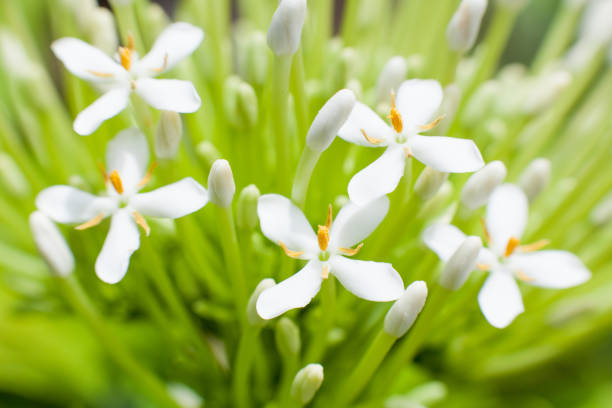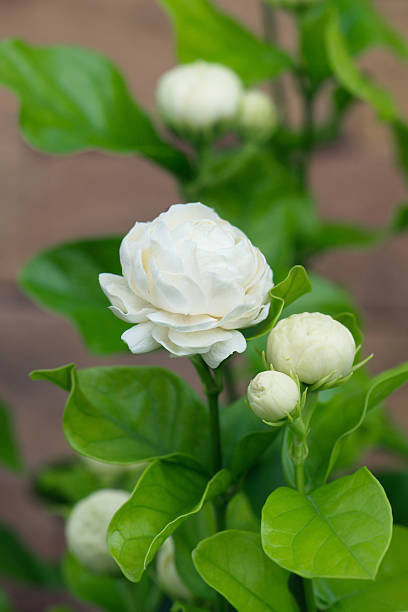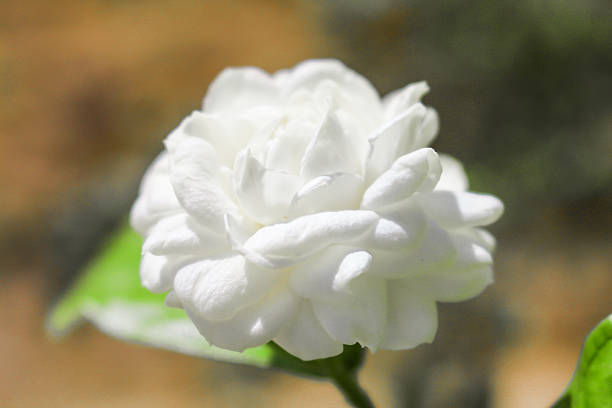Are Gardenias Cold Tolerant?
Gardenias can withstand light frosts, but prolonged cold in exposed areas will destroy the foliage. If you live in a cold climate, you can grow gardenias indoors during the winter months. Gardenias are native in tropical and subtropical regions with 18.3°C during the day and 15.6°C at night. Most cultivars are only hardy in USDA Plant Hardiness Zones 8 to 10.

Table of Contents
How Cold Can Gardenias Tolerate?
Gardenias typically cannot survive -9.4°C (15° F )or lower temperature. However, several cold-hardy varieties can tolerate winters in Zones 6b and 7. They can handle a low temperature of about -20.6 to -17.8°C (-5 to 0°F) but under in a well-protected and sheltered setting. They should be away from direct winter winds. It’s best to place them in a container. You’ll be able to bring them inside throughout the winter, increasing their chances of survival as a result.
Can Gardenias Stay Outside in Winter?
Keep in mind that gardenias should only be grown in the ground if you reside in one of the following climate Zones 7-10. To summarize, it is quite simple to safeguard gardenias that have been planted directly in the ground throughout the winter months. However, it does necessitate a small amount of initial preparation on your part.
How to Overwinter Gardenias in the Ground

Right Location and Adequate Amount of Sunlight is Important
It is essential to ensure that your Gardenias are grown in the proper position long before the onset of winter weather. Gardenias do not require prolonged exposure to the sun, as too much sun might cause the flowers to fade more quickly than they otherwise would.
However, they require some sunlight to reach their maximum growth and flowering potential. Locations with the partial sun (ideally morning sun) and partial shade are suitable for growing plants in containers. Not only will the appropriate location promote maximum growth, but it will also assist in protecting them from the elements on cooler winter days. It will maintain a constant temperature.
Although Zone 7 does not always receive a significant amount of snow, it does suffer multiple winter days in which temperatures drop into the 30s and, on occasion, the 20s.
While this temperature will not cause your Gardenia to die, it will have a short-term effect on their growth. The more sunlight your gardenias receive, the better off they will be in the long run.
Cover Your Gardenia with Frost Blanket
Frozen conditions are quite rare for gardenias grown in zones 8 through 10. A single night of frost, on the other hand, is usually not enough to bring down a gardenia. On the other hand, a frost blanket may be required in zones 7 and 8, where frost occurs more frequently.
Frost blankets are what they sound like they are. They cover plants that are vulnerable to frost to keep them safe. You can use various items to cover your Gardenia that isn’t as expensive, aside from frost blankets.
Frost blankets are frequently made of cardboard boxes, tablecloths, or bed sheets. However, keeping the blanket firm is essential to preventing frost from accumulating on it and the blankets. When using a tablecloth or bedsheet, you may want to lay rocks on the corners to help hold it or find a means to pin it down to keep it from moving around.
Apply a Fresh Layer of Mulch
If your soil does contain damaged or weakened materials that may be prone to frost, adding a fresh layer of mulch along the edges will go a long way toward slowing it down.
As mentioned above, with gardenias grown in zones 7 and 8 – heated containers also cut down on this damage since they are often kept at higher temperatures. Adding some dormant compost into the pots can help maintain their healthy roots.
Overwintering Potted Gardenias
For areas with a lot of snow or long periods of freezing temperatures, it is recommended to plant gardenias in pots rather than in the ground. You will be able to bring them inside during the cold months. On the other hand, overwintering potted Gardenias are more complicated than simply bringing them indoors.
Certain things must be done both before and after bringing your Gardenia indoors, and you must remember to do them both. A gardenia will not live because you have brought it indoors, as is often the case. Despite being shielded from cold temperatures, you will still need to provide it with the best growing circumstances. It’s because it will not go dormant during the winter as outdoor gardenias do.

Find A Good Spot to Place Your Potted Gardenia
The best place to keep a gardenia indoors is in a bright, south-facing window with plenty of light. At least half of the day should be spent in direct sunshine on the plant. If you don’t have a sunny window to place your Gardenia, you can also use an indoor grow lamp to provide the light that it requires for growth.
Provide Adequate Amount of Water
When your Gardenia is indoors, make sure you don’t forget to water it as much as you normally would. Generally speaking, you should water it with the same regularity as you would if it were in the open air. However, you can check the moisture level in the soil to determine whether or not it needs water. If the soil seems dry, it is most likely due to a lack of moisture in the soil.
Check For Pests
Make sure you check for insects, pests, and scales that can attack the potted Gardenia from time to time. These pests are almost exclusively found inside the house on indoor plants, so it’s important to prevent them from attacking your precious plant. One of the best ways is having a quarantine procedure. This consists of isolating some plants by constructing a wall separating them from other living things and putting up barriers against entry/exclusion at every possible.
